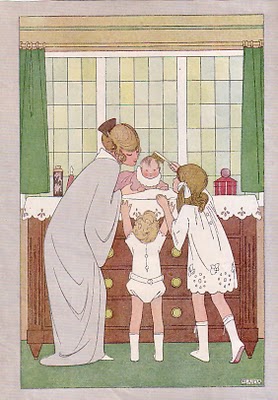A Colorful History
By Lisa March 1st, 2010

Culture has conditioned us to consider pink as a feminine color and blue as a masculine color. From the day we are born, this conditioning begins at the hospital, with baby girls dressed in pink and baby boys in blue. But historically speaking, this has not always been the case.
Regarded as a watered-down red, pink was once considered a “fierce” masculine color which communicated power. Blue was considered appropriate for girls because it was seen as the more delicate and dainty color, and also closly associated with the Virgin Mary. This particular color connection was considered conventional from the early 1900s until shortly after WWII, when it switched to the current gender association. Why the switch? There is no definitive answer, but it seems that Nazi Germany may have had something to do with it, as pink triangles were used in concentration camps to identify homosexuals.
In other countries, pink and blue do not have the same gender assignment. Many colors are viewed differently. For example, in Asia, babies are more likely to be dressed in red, as are brides. This is the color of celebration, whereas white is considered a color of mourning. Thus the pink and blue tradition is recent and relatively exclusive to the Western world.
